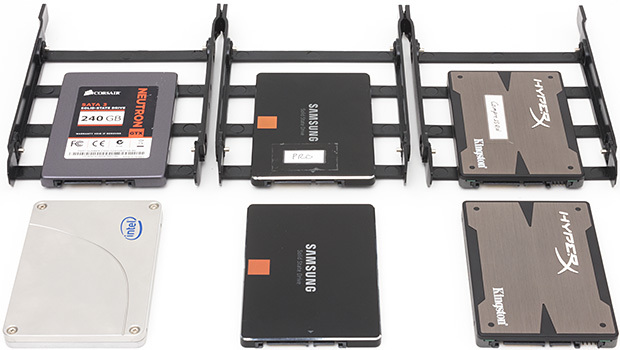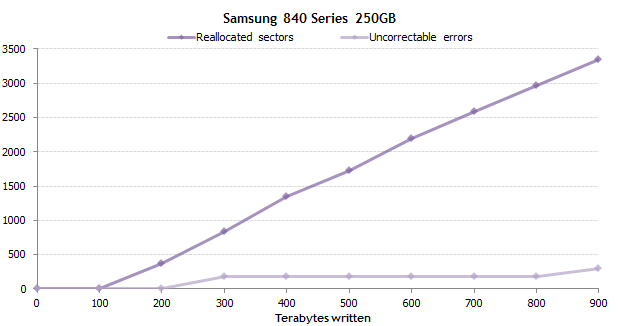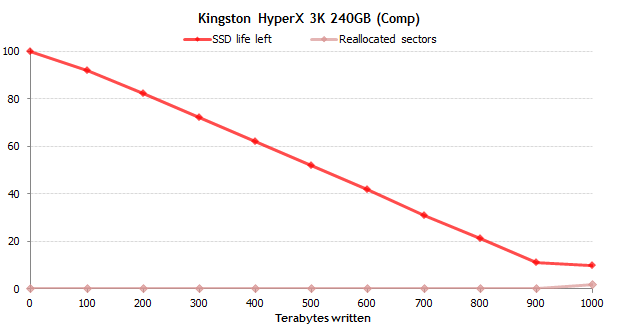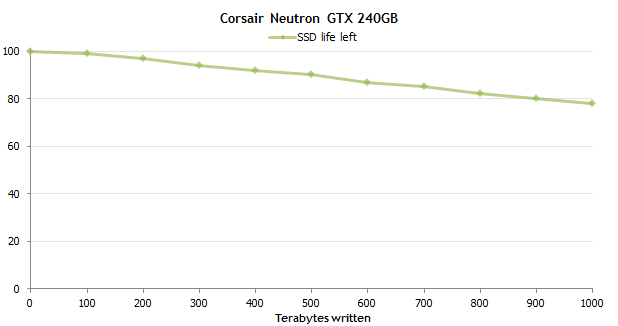Endurance SSD test: write 1 petabyte

The computer edition of The Tech Report last August began testing SSD-drives . The goal is to check how many rewriting cycles each of six instances sustain. The experiment continues to this day: after recording 1 petabyte, three drives survived .

For testing chose the program Storage Utilities from Anvil
The performance of surviving drives has not declined much. In general, these models are not as interesting as the pathogenesis of deceased "patients." All of them shortly before death began to work a little slower, but broke down for various reasons.
')
The Intel 335 Series 240GB and Kingston HyperX 3K 240GB drives have issued numerous warnings about imminent failure, although at the very end they completely stopped responding to external stimuli.
But the Samsung 840 240GB, which uses a more fragile TLC NAND flash memory, died without warning, except for failures. He suffered during the life due to failures of individual memory cells and numerous irreparable errors. It managed to record 900 TB, while 119 out of 295 unrecoverable errors occurred between 800 and 900 TB, and almost all the rest were in the region of 300 TB, that is, after conducting a test for storing data without power for several days.

All three dead SSDs completed their work in a state where it was impossible to recover data from them. In particular, the Intel drive went into read-only mode, and after turning off and on the power, activated something like a self-destruct procedure and completely failed (perhaps this was due to an attempt to write to a disk that is in read-only mode). It was still detected by the driver, but only as a 0GB SATA device.
Although six copies are obviously insufficient statistical sampling, but all of them exceeded the service life stated by characteristics by hundreds of terabytes. In particular, each managed to record more than 700 TB. This proves the very high reliability of modern consumer SSDs. Especially admire the performance of the drives, which continue to work after the petabyte: this Corsair Neutron GTX 240GB, Samsung 840 Pro 256GB and the second copy of Kingston HyperX 3K 240GB (with data compression).
Because of the built-in data compression, Kingston HyperX 3K registered only 716 TB of recorded data, although a petabyte was sent to it. No failures yet: only two displaced sectors.

Corsair Neutron GTX, according to the integrated Toolbox utility and the “SSD life left” indicator, feels like new at all.

The Tech Report promises to bring the remaining three drives to death and tell you how they died.

By the way, Google several years ago published statistics on HDD failure in its data centers. It means that the occurrence of failures is not related to the amount of information recorded on the disc, but it positively correlates with the number of starts and stops of the disc and negatively correlates with temperature: the colder, the more often failures occur.
Source: https://habr.com/ru/post/226513/
All Articles